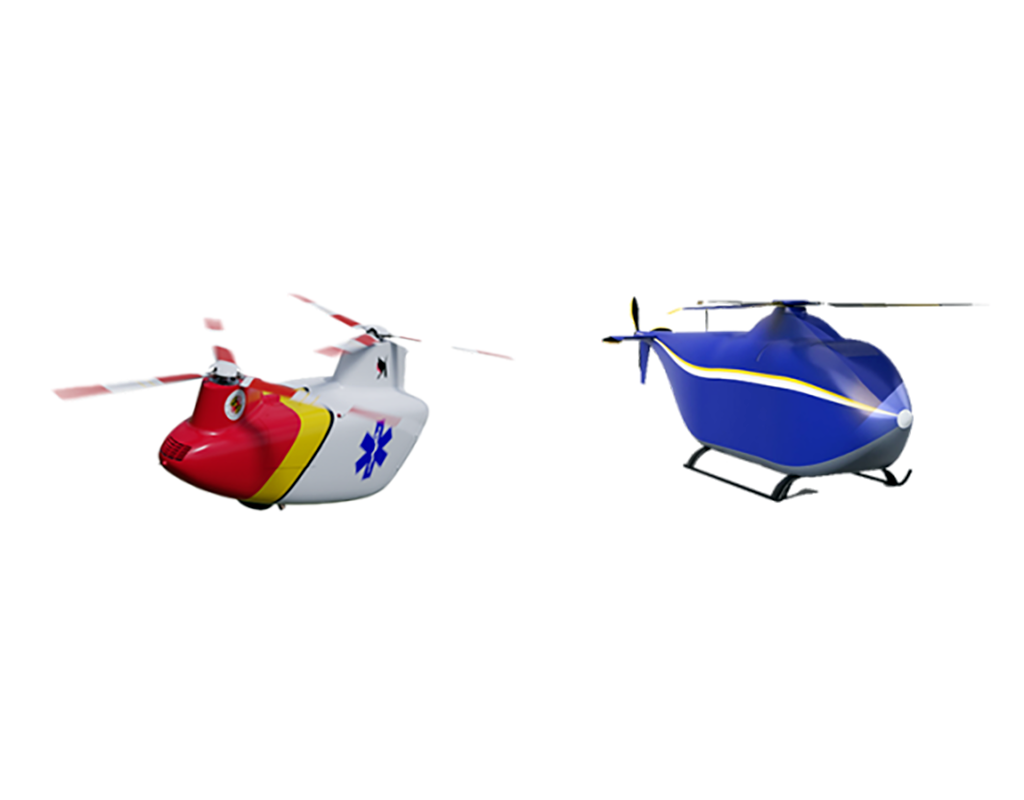
The Vertical Flight Society (VFS) has announced the winners of its 38th Annual Student Design Competition: The University of Maryland took first place in both the graduate and undergraduate categories. In addition, the UMD undergraduate team also won the Bonus Weight Optimization task and the team from the University of Kansas took Best New Undergraduate Entrant honors. The Boeing Co. was the sponsor of this year’s competition with a total of $12,500 in prize money. In addition, Altair sponsored the optional bonus structural weight-optimization task with an additional $2,000 in prize money.
Each year, the VFS competition challenges students to design a vertical takeoff and landing (VTOL) aircraft that meets specified requirements, providing a practical exercise for engineering students at colleges and universities to promote student interest in VTOL engineering and technology.
Academic teams from around the world submitted entries in this year’s competition, with a total of 10 proposals from four different countries. Executive summaries for the top-winning entries from the 38th Student Design Competition are available at www.vtol.org/sdc, along with past winners.
The 2020-2021 Student Design Competition was entitled, “2025 Unmanned Vertical Lift for Medical Equipment Distribution.” Autonomous aerial delivery of supplies and commodities has been of high interest in recent years. The COVID-19 pandemic amplified the need for fast autonomous delivery to precise locations. Among many impacts to daily life, the pandemic forced a re-examination of how medical and basic supplies are distributed within large communities or between different communities, especially if a lockdown is in place. Vertical lift technology can aid the worldwide community through safe distribution of medical supplies and other commodities through runway-independent “contactless” delivery. Other applications include disaster relief and eventual commercial applications.
The goal of this year’s Request for Proposals (RFP) was to develop an unmanned vertical lift concept that could deliver, at high speed, up to 50 kg (110 lb) payloads to end-user customer sites up to a 50 km (31 mile) radius, and to logistics centers up to 200 km (124 miles) away. The sizing was such so that the vehicle could make a difference within a future pandemic or natural disaster. Proposal submissions required only 2020-year technologies in order to support an initial entry into service in 2025.
The winning teams for the graduate category are as follows:
| Place | University (Graduate) | City, Country | Team |
| 1st | University of Maryland | College Park, Maryland, USA | Alicorn |
| 2nd | University of Melbourne | Melbourne, Australia | MU-21 Juggernaut |
The University of Maryland winning entry in the graduate category was named after the unicorn’s horn, an alicorn, which was thought to possess magical healing powers including fighting contagious diseases. The Alicorn, a tandem rotor autonomous unmanned air vehicle, was designed to provide relief in pandemics and natural disasters by delivering essential medical supplies to affected communities at a high speeds of 324 km/h (175 kt). Superior payload handling and autonomous loading and unloading provides ground personnel with convenience, while ensuring the safety of package and the surroundings. Alicorn’s multi-mission capability also keeps it from remaining idle between disasters.
The winning teams for the undergraduate category are as follows:
| Place | University (Undergraduate) | City, Country | Design Team |
| 1st + Structural Weight Optimization Bonus Task |
University of Maryland | College Park, Maryland, USA | Garra |
| 2nd | Pennsylvania State University | State College, Pennsylvania, USA | Albatross |
| 3rd | Royal Melbourne Institute of Technology |
Melbourne, Australia | Hermes |
| New Entrant | University of Kansas | Lawrence, Kansas, USA | Asklepios |
The University of Maryland also fielded the winning undergraduate team. Garra is named after the Garra Rufa fish, also known as the doctor fish, which is able to sprint at high speeds underwater. Garra is a fully autonomous, thrust-compounding single-main-rotor helicopter capable of delivering packages at high speeds and within the specified mission envelope. The design has the ability to achieve speeds at a zero-degree shaft tilt of 150 km/h (135 kt), keeping the package from any adverse attitudes during all stages of flight, a key feature of the design. The design also provides package deployment versatility and redundant safety measures to ensure mission and vehicle integrity. Garra is powered by a twin four-cylinder, two-cycle engine combination, providing 74 kW (99 hp) of available power throughout the missions. A power surplus provides the design with incredible versatility and maneuverability. The vehicle is also designed to complete two of the mission profiles even in the event of one engine inoperative.
Two members of each of the first-place winning teams are invited to the 78th Annual Forum & Technology Display — planned for May 10–12, 2021 in Fort Worth, Texas — to present the details of their designs.
The Annual Student Design Competition sponsorship rotates between Airbus, Leonardo Helicopters, The Boeing Company, Bell, Sikorsky Aircraft and the US Army Research Lab.
As announced previously, the 2021-2022 RFP for the 39th Annual Student Design Competition, sponsored by Bell is also now available at www.vtol.org/sdc. This new RFP is entitled, “eVTOL Air Taxi for Passengers with Reduced Mobility (PRM),” and challenges students to design an all-electric vertical takeoff and landing (eVTOL) aircraft that accommodates passengers with a broad spectrum of mobility difficulties or other disabilities for urban air mobility (UAM) missions. The Vertical Flight Society encourages universities from around the world to form teams and take part in this exciting and challenging competition, which is conducted to attract the best and brightest engineering students to the vertical flight industry.
This press release was prepared and distributed by the Vertical Flight Society.



